The picture of the Blessed Mary is from over the door of the Anglican Church in Croesyceiliog, which is particularly fine and Mediaeval and very beautiful. St Mary's Croesyceiliog is an Anglican foundation, by the family who lived in Llanfrechfa Grange, which was a grange of the Cistercian Abbey at Llantarnam before being seized by Henry the VIII and its monks turned out.A grange was a small cell of the priory-usually a church and a farm administered by one or two monks.







Priory of The Blessed Virgin and St Triac
Malpas (Monks of Cluny)
Malpas Priory was a house situated a mile and a half from Newport and was a cell of the Cluniac Abbey of Montacute in Somerset, Robert de Haya made a grant to the priory Count Wlilliam de Mortain had founded 0n his lands at Montacute Abbey in 1102, somewhat later than the grant to Glastonbury and this resulted in the founding of a small priory in Malpas. The foundation seems , Bruce Copplestone Crowe says to have been made jointly with Ranulf, physician to Henry I, who had received lands in Gwynllwg (Wentloog) from the King.
Henry II and Mabel of Cefn Mably
King Henry was overlord at Gwynllwg between the death of Robert Fitzhamon in 1107, when the wardship of his heiress, Mabel (of Cefn Mably) and of all her lands passed to him and 1113 or 1114, when he married the heiress to is bastard son .Robert and gave him all the landsheld by her father. It was Mabel, who founded St Peter's Priory near Peterstone, near St MellonsIt was in the period of 1107-1113/1114, therefore that the King gave the lands on the levels of Mendalgieff in the lands of Wentloog (now the site of Newport Docks)with Robert de la Haye’s permission, and since Ranulf joined Robert in founding the priory, he became a monk there himself, and willed the lands at Mendalgief to them. So it was at this time the priory came into being. Bruce Copplestone Crowe has gone into the origins of St Triac, but St Brioc, with St Patrick and St Iltid was a man from the Gwent area who was a student of St Germanus (St German )of Auxerre and ordained a priest by him, as Dr Hunt Nash says.
Robert’s own charter, giving the ‘town of Malpas with the church’ has nor survived, so we don’t know , whether his first wife Gundreda joined him in this foundation as she had at Bassaleg/ If she was involved in the charter must date from before 1109,since by 1111 Robert had two children by Muriel, his second wife. Nevertheless Clunaic monks of Montacute were at Malpas when the king relinquished his Overlordship of Gwunllwg to his son in 1113 or 1114 This Charter which records Ranulf the Physician’s grant to he house says:
Ranulf, physician to King Henry, by permission of the king,Sir Robert de Haya consenting grants to St Triac and the monks of Montacute at Malpas, all his lands in the marsh at Mendalgief(Mendalgif) with his free chapel, namely two hundred and thirty three acres of land and all his fisheries on the Ebbw as in the Usk. And should any wrech from river and sea be cast upon the aforesaid land, as it was his, so shall it be theirs. The aforesaid land, with the chapel etc. Sir Robert de Haya, then lord of Wentloog (Gunlioc) allowing the same. Henry, king of England had given to Ranulf and his heirs and inasmuch as he has assumed theie monastic habit he has constituted the said monks his heirs.
Witnesses:My lord, King Henry, Sir Robert de la Haye, Ranulf the king’s chancellor. Winebald de Ballon etc
Bruce Copplestone Crowe writes in his article ’ There is no doubt that the priory of Malpas was founded by Robert de la Haye , possibly with the assistance of the king’s physician, and not by Winebald de Ballon, Lord of Caerleon, as has been claimed
Winebald’s lands at Caerleon, which he had in succession to Thurston Fitzrolf, their Domesday book holderlay entirely withing the Commote of Edlogan , and did not include Malpas, which was in Gwynllwg. Winebald did give ‘terram de Carrlion’ (land at Caerleon) and the Church of Karion to the Priory of Montacute , the mother house, but these were probably the Church of St Aaron at Caerleon and its associated lands, which were in Malpas’s hands in the fourteenth century.’(p9)
The Priory of St Triac at Malpas was a small house, described as a ‘cell’ in the Henry VIII records. In the taxation of Pope Nicholas, are listed the following possessions and their value:
£1.16s from the manor at Newport (Novus Burgos—new Borough-New-Port))
18 shillings in rent from Newport
8 shillings from the windmill
30 acres of Marshland and its liberties 6 pence an acre
Warda’s pastureland 2 shillings
And near Malpas 20 acres of land and its liberties 3 pence
And near Malpas 3 acresof grazing land and its liberties 2 shillings.
The customary operations in the autumn 2 shillings
All together it comes to £41.18s
‘The Prior of Malpas has 14milk 40 dairy cows ,and all their products and milk.1s 8d each. (altogether 6s8d.’)
It was valued at £15.2s4d.clear and granted as parcel of the cell of Montacute in the first of Edward VI to Sit William Herbert.
The last Prior of Montacute, the mother house, was Dom Robert Sherbourne.The last Prior of Malpas was John Montague. We also learn how monks were delegated to the little Priory at Malpas. When Thomas Chard was Prior, he was recalled after a while by Robert Sherbourne. Then John Cogyn was sent,and then John Montague, the last Prior before Henry VIII seized it. It seems the Prior of Montacute regularly changed the Priors at Malpas.
Daily Life of a Monk at Malpas
The Clunaic monks were among the strictest of the Benedictine monks. Their job was primarily to serve God through the Opus Dei, the Daily Office. Beginning at 2am, they would rise to sing Mattins and then again at six to sing Lauds and then every three hours of the day. The last office of hours was usually around 9 at night when they would sing 'Compline' which ended with their singing the 'Salve Regina' in the Lady Chapel (would have been demolished at the 'reformation'.However all the monks had a responsibility towards the upkeep opf their Abbey. Everyone knows of the tremendous expense of maintaining buildings and there are many appeals today asking for money to help wioth maintenance. These priories were given money and lands by the Norman rulers for the upkeep of these institutions, but they also fulfilled valuable social purpose. People would work on the land and in return would receive an income from their own strips of land. We can see from the assets iof the priory in which farming businesses they were engaged.
This was a small cell, and the brothers would have engaged the help of lay brothers who worked on the tenanted lands. All parishioners contributed to the church with tithes, and the services given to the lord (working for the Lord for part of the week in return for a strip of land, (a hide) was then made over to the church as a ‘liberty’.Of course this system was only as good as the character of the Prior.
Most were saintly and holy men, others could be sharp or brusque, some were generous and so forth. In Malpas -the monks were supervising cheese making and butter and also used their beef cattle them for meat. We also learn that they had land for grazing and they had rents from properties on their lands. Nevertheless, the Priory was not rich but ‘comfortably off’.
The brothers would be up in the early morning for ‘Mattins’. This included the triumphant hymn (and canticle) the Te Deum. 'We praise thee O Lord, we acknowledge thee to be the Lord', There followed Lauds around 6am –a shorter service altogether, praising God, then breakfast. Around 9, 12 and 3 would be other services then Vespers at 6 pm Containing the Magnificat)
At 9pm , or thereabouts would be Compline (Containing the Nunc Dimittis-'Now Lord, lttest thou thy servant depart in peace according to thy word. For mine eyes have seen Thy salvation, which should be a light to lighten the Gentiles and rule thy peaople Israel)This was Simeon's Song on seeing the baby Christ presented in the Temple. The Angelus bell would be rung at 6am and 12 noon, 6pm and Midnight . It is lovely to think of the many cattle on the fields around the little Priory all turning towards the Church in prayer when the bells sounded, the 6pm bell probably signalling the end to the working day and call to prayer for Vespers.At this time, all the workers in the nearby fields would turn towards the Priory and say the Angel Prayer They would praise God for sending himself to earth as the human son of the Virgin Mary.Looking at the large and sprawling estate of Malpas and Bettws, the monastic lands of Montacute, it is impossible to imagine it as farmland with scattered thatched cottages for the people working at the Priory.
CHAPTER
The monks would have a meeting in the morning after breakfast to discuss the day’s agenda, then they would begin the work of the day. Work was important as a form of prayer to the Benedictines. LABORARE EST ORARE was their rule, formed by Benedict in his rule for a Life of God , and for people living together. The Cluniacs, by contrast spent far more time in prayer as a rule and did less manual work than ordinary Benedictines. Prayer was important and they would have had Mass once a day as well. As the host was raised by the priest , the big bell would be tolled once , as the sacring bell was also rung inside the church. All the workers in the fields and people round about bowed their head and knew at that moment, the bread and wine were being consecrated.Prayer was going on all the time. Indeed many people attended the daily Mass, and were allowed to use the Priory Church as their parish church.
Archdeacon Coxe in his Tour of Monmouthshire gives the following account of the chapel building of the Cluniac monks.He is writing of the Priory Church (now Anglican since Henry VIII seized it)
The chapel of this cell, now the parish church, is worthy of being visited by the Antiquary, as one of the most ancient religious edifices of these parts.
It is a small building of unhewn stone , of an oblong shape like a barn , with a belfry having two apertures for bells. The arch door, which is on the western side the stone frames of the three principal windows , as well as the arch that separates the chancel from the church , are all rounded and decorated with friezes of hatched moulding , deticles and receding columns , peculiar to the Saxon and Norman architecture. (the dedication to St Triac may have been a Celtic/Saxon Church already in existence EN) The arch of the southern window, which seems to have been a doorway( into the attached Priory?)is more elegantly ornamented and embossed with roses,not unlike the Etruscan style. All the columns, which are mostly of a rude form, have dissimilar capitals and shafts a striking feature of Saxon structures.Some modern Gothic windows have been introduced into the stone frames of the original apertures.’
THOMAS PROTHERO's RESTORATION OF THE PRIORY CHURCH-ALMOST AN EXACT REPLICA
The church was extensively restored and repaired by Thomas Prothero, to whom we should be grateful, because in 1849-50 it had been roofless and ruined. Bruce Copplestone Crowe says, however ‘it may not be very different from the Church Montacute Priory built there in the 12th century,( having been possibly an extension of a Saxon building.EN) It seems from drawings made of the Priory church in 1800 and just before it was rebuilt, for instance, that all he did was to take it down and rebuild it on the same lines , using original carvings where they survived in good condition and replacing others with replicas. It is fortunate, perhaps, that Prohero was working when neo-Norman architecture was fashionable.’ P9 Having seen some unfortunate ‘restorations’ by people not so in love with the original Norman architecture, that there were some insensitive ones at Usk and Chepstow and even at Basseleg, it is good Rev Prothero was so sensitive in his restoration.
NEXT WHO WAS THE CELTIC SAINT TRIAC?











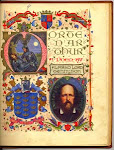







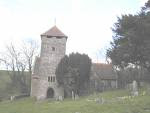
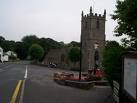


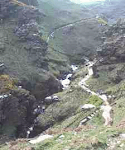




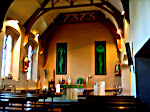









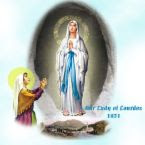


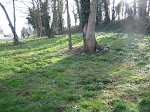

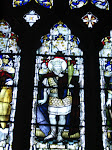
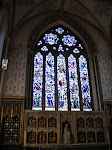
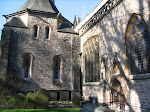
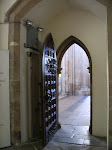



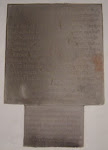



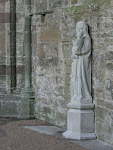









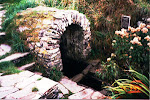


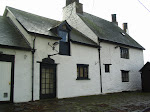
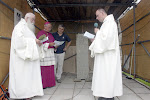




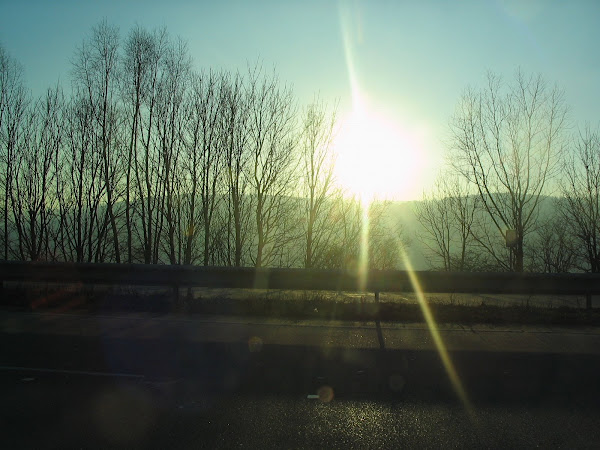


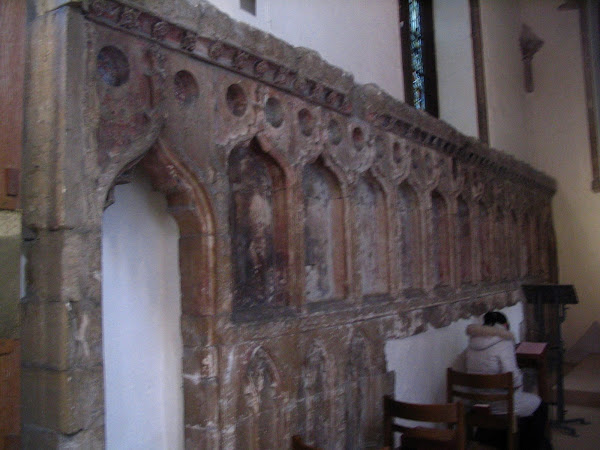
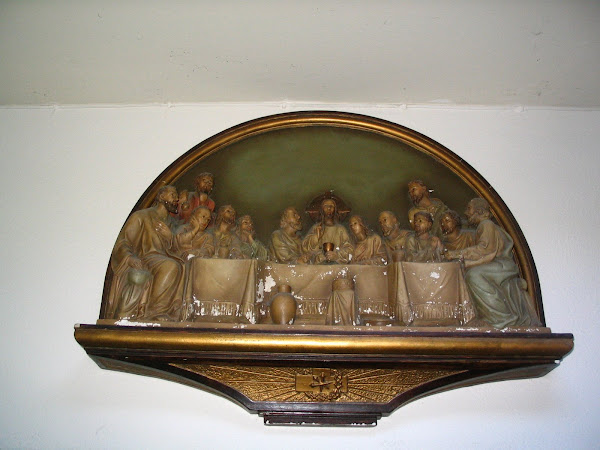




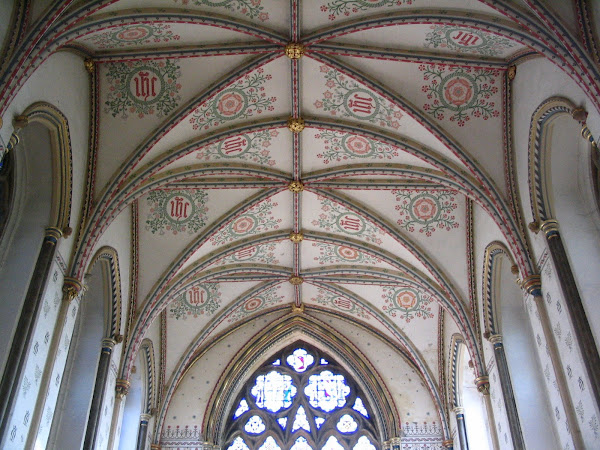


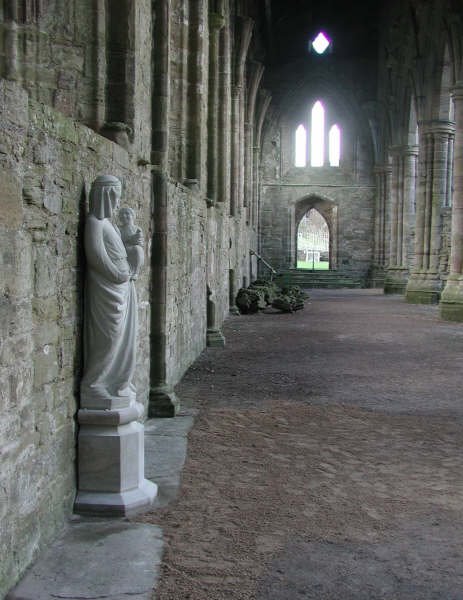
No comments:
Post a Comment